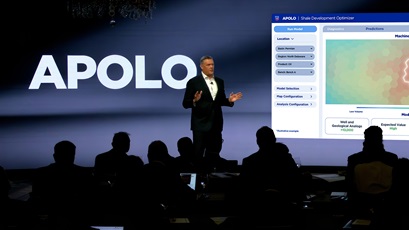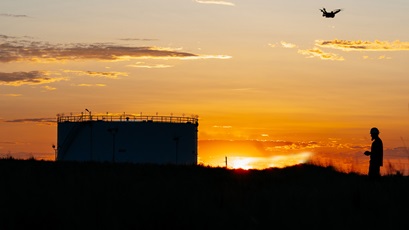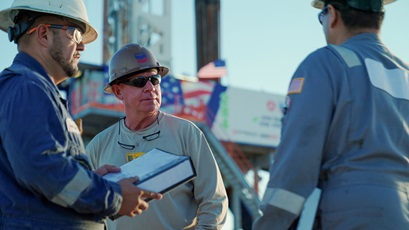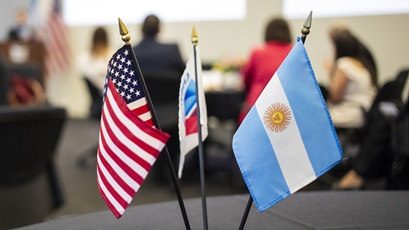our operations
the good twin: how digital doppelgängers are driving progress
2 min read | february 07, 2023
Our Wheatstone platform in Australia, above, is among the locations where we use digital twins.
Chevron is creating virtual replicas of some of its facilities to diagnose and predict real-world situations.
Called digital twins, these computer-based digital doppelgängers help us assess equipment in real time—whether it’s onsite, in a city or in another country.
virtual reality
Those who’ve shopped for a product online using 3D software can imagine how our equipment is presented virtually as digital twins.
Artificial intelligence technology gives us the ability to diagnose and predict upsets in processes or issues with equipment.
digital transformation
At Chevron, digital twins provide two important functions by:
- Giving workers rapid and remote access to data. This helps streamline work processes, drive insights and diagnose issues.
- Helping monitor and optimize equipment. This helps engineers predict the future state of facilities and adjust to improve performance.
“This is really changing the way that engineers get work done,” said Keith Johnston, Chevron’s manager of Digital Engineering. “The speed of change in our industry requires us to think differently, act differently and support each other differently to have more impactful results in meeting the world’s energy needs.”
case study
One example of this technology in practice involves a Houston-based technical center expert using a digital twin of the Wheatstone platform in Australia. The technology helped colleagues separated by the Pacific Ocean to collaborate and trouble-shoot a solution to an issue in real time, allowing operations to restart faster.
the modern-day crystal ball?
One of our twins is predicting the future states of a Kazakhstan plant and is the first of its kind at Chevron.
Outside of our internal efforts, we participate in Project Astra, which is led by the University of Texas at Austin. The goal of the project is to establish a methane sensor network to monitor oil and gas facilities in the Permian Basin. Part of that work involves developing a digital twin of the pilot region. The twin can simulate emissions that are expected to emerge from the area.
welcome to the metaverse
The thing that excites Johnston most isn’t what digital twins offer now; it’s their potential as he envisions them evolving into an industrial metaverse.
“Imagine avatars inside the twin, engaging,” he said. “Imagine we could meet inside the twin and walk through the virtual environment. The digital twin is at the heart of the progression between reality and the virtual world.”
topics covered
related content
-

 how APOLO helps chevron pinpoint prime drilling locations
how APOLO helps chevron pinpoint prime drilling locationsour operationsnovember 12, 2025
-

 robotics supports more efficient workplace
robotics supports more efficient workplaceour operationsnovember 10, 2025
-

 the people who power the US energy advantage
the people who power the US energy advantageour operationsnovember 06, 2025
-

 a statement from chevron CEO mike wirth on Argentina
a statement from chevron CEO mike wirth on Argentinaour operationsseptember 24, 2025
chevron email updates
Subscribe to our newsletter to receive news and updates.



